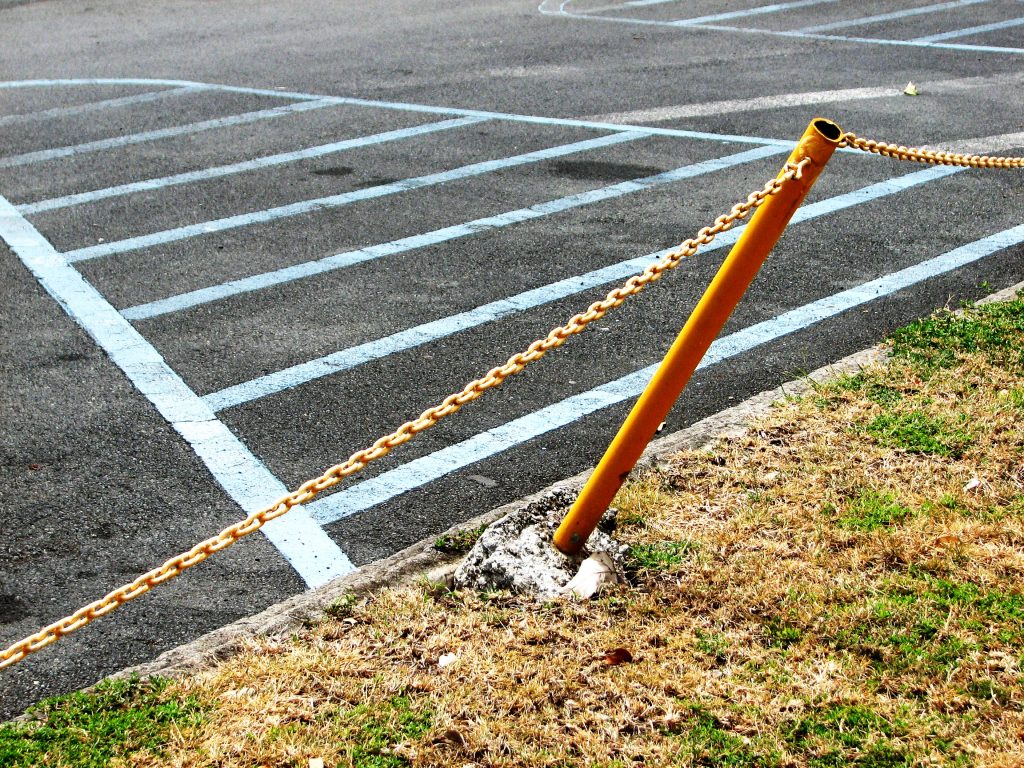 It’s common sense that self defense class instructors should teach the students how to defend themselves and not inflict pain or broken bones while instructing. However some instructors can go overboard while trying to “teach” these skills. The following case out of Lafourche Parish highlights what can go wrong when simulations in a self defense course get a bit too real for one participant causing her a broken arm and other damages.
It’s common sense that self defense class instructors should teach the students how to defend themselves and not inflict pain or broken bones while instructing. However some instructors can go overboard while trying to “teach” these skills. The following case out of Lafourche Parish highlights what can go wrong when simulations in a self defense course get a bit too real for one participant causing her a broken arm and other damages.
In 2010, plaintiff participated in a 3-day Rape Aggression Defense (RAD) self-defense course being taught by the Lafourche Parish Sheriff’s Office. During the course, plaintiff and other participants received instructions for two days and on the third day, participants engaged in a series of exercises simulating attacks upon them by “aggressors”, at this time they were instructed to deploy the defensive techniques they had learned. During one of these simulated attacks, in which a Lafourche Parish Sheriff’s Deputy played an “assailant”, plaintiff’s arm was broken. Plaintiff had to undergo surgery to repair the comminuted fracture, requiring two plates and 21 screws to be inserted into plaintiff’s arm.
At the initial bench trial, the recorded RAD simulations were played on video, showing the RAD instructor was close to plaintiff during the exercise and was constantly giving instructions to the plaintiff on how to properly perform defensive techniques. In the video, the Sheriff Deputy playing the “aggressor” pushes and hugs the plaintiff while the instructor tells the plaintiff how to defend herself. The trial court concluded after watching the video, it did not find the Sheriff’s Office or the Sheriff’s Deputy negligent, as the only way they could have prevented the plaintiff’s injury would have been to not engage physically with the participants, which would have defeated the purpose of the exercising teaching them to defend themselves against aggressive criminals. The trial court subsequently dismissed the defendants with prejudice, and plaintiff appealed.
 Louisiana Personal Injury Lawyer Blog
Louisiana Personal Injury Lawyer Blog


 Class action lawsuit certification is one of the most complex areas of the law to explain. The question of whether a lawsuit would be best as a class action or as individual lawsuits often comes down to a determination of what is the best method for fair and efficient adjudication for both the plaintiffs and the defendant.
Class action lawsuit certification is one of the most complex areas of the law to explain. The question of whether a lawsuit would be best as a class action or as individual lawsuits often comes down to a determination of what is the best method for fair and efficient adjudication for both the plaintiffs and the defendant.  Sometimes you have a run of bad luck. If your injured on the job then not long after you get into a car wreck it can be hard to pinpoint which incident caused your injuries. If you are unfortunate enough to be involved in this scenario make sure you have the best workers compensation lawyer you can get to help the court understand your work related injuries. The following case out of Metairie, Louisiana shows how one recent appeals court dealt with just such a factual scenario.
Sometimes you have a run of bad luck. If your injured on the job then not long after you get into a car wreck it can be hard to pinpoint which incident caused your injuries. If you are unfortunate enough to be involved in this scenario make sure you have the best workers compensation lawyer you can get to help the court understand your work related injuries. The following case out of Metairie, Louisiana shows how one recent appeals court dealt with just such a factual scenario. In litigation, “discovery” is the legal procedure by which parties obtain evidence from other parties or non-parties. Examples of common discovery tools include depositions (a witness’s out-of-court testimony) or requests to produce documents or other things. In Louisiana, attorneys must sign discovery requests, responses, and objections to discovery requests. This certifies that the request, response, or objection is consistent with the rules of discovery and is warranted by existing law or a good faith argument for extension, modification, or reversal of existing law. ( See
In litigation, “discovery” is the legal procedure by which parties obtain evidence from other parties or non-parties. Examples of common discovery tools include depositions (a witness’s out-of-court testimony) or requests to produce documents or other things. In Louisiana, attorneys must sign discovery requests, responses, and objections to discovery requests. This certifies that the request, response, or objection is consistent with the rules of discovery and is warranted by existing law or a good faith argument for extension, modification, or reversal of existing law. ( See Countless lawsuits are decided under the legal standard of summary judgment. Summary judgment occurs when lawyers request a court to decide whether there are enough facts in dispute to even proceed with a lawsuit. The party requesting summary judgment must show that there is simply no dispute of any material fact and that the person requesting summary judgment is entitled to judgment as a matter of law. In answering this question, judges determine whether there is enough evidence in a case that a jury would be able to side with the person not requesting summary judgment. As a tactical matter, good lawyers often request summary judgment to dispense with certain claims early on in a lawsuit thus saving their clients time and money.
Countless lawsuits are decided under the legal standard of summary judgment. Summary judgment occurs when lawyers request a court to decide whether there are enough facts in dispute to even proceed with a lawsuit. The party requesting summary judgment must show that there is simply no dispute of any material fact and that the person requesting summary judgment is entitled to judgment as a matter of law. In answering this question, judges determine whether there is enough evidence in a case that a jury would be able to side with the person not requesting summary judgment. As a tactical matter, good lawyers often request summary judgment to dispense with certain claims early on in a lawsuit thus saving their clients time and money. Not all slip and fall cases are successful as the burden of proof on the victim can be high in Louisiana. In a recent opinion out of the Louisiana Fifth Circuit Court of Appeals the trial court’s decision to award $20,000 to Carolyn Bennette, who slipped and fell at the Brother’s convenience store and gas station in Avondale, Louisiana was reversed. As discussed below, the appellate court stated that the defendants were correct in arguing that the trial court held the defendants to an improper burden of proof. In order to prove a slip and fall claim, a victim (here, the Plaintiff Ms. Bennette) has the burden to produce direct evidence supporting her claim, and the Appellate Court found that Ms. Bennette failed to prove three aspects of the claim.
Not all slip and fall cases are successful as the burden of proof on the victim can be high in Louisiana. In a recent opinion out of the Louisiana Fifth Circuit Court of Appeals the trial court’s decision to award $20,000 to Carolyn Bennette, who slipped and fell at the Brother’s convenience store and gas station in Avondale, Louisiana was reversed. As discussed below, the appellate court stated that the defendants were correct in arguing that the trial court held the defendants to an improper burden of proof. In order to prove a slip and fall claim, a victim (here, the Plaintiff Ms. Bennette) has the burden to produce direct evidence supporting her claim, and the Appellate Court found that Ms. Bennette failed to prove three aspects of the claim. 
 Being an employee aboard a ship in the Gulf of Mexico can be hard work, and it can also be dangerous work. For Mark Baldwin, who worked as a sandblaster and painter for Cleanblast, LLC, danger presented itself when he was assigned to the vessel
Being an employee aboard a ship in the Gulf of Mexico can be hard work, and it can also be dangerous work. For Mark Baldwin, who worked as a sandblaster and painter for Cleanblast, LLC, danger presented itself when he was assigned to the vessel  A redhibitory defect is a problem with an article that renders it useless to the buyer. In Louisiana, although a seller owes no warranty for defects that are known to or should have been discovered by the buyer at the time of the sale, a seller does, by operation of law, warrant the buyer against redhibitory defects
A redhibitory defect is a problem with an article that renders it useless to the buyer. In Louisiana, although a seller owes no warranty for defects that are known to or should have been discovered by the buyer at the time of the sale, a seller does, by operation of law, warrant the buyer against redhibitory defects 